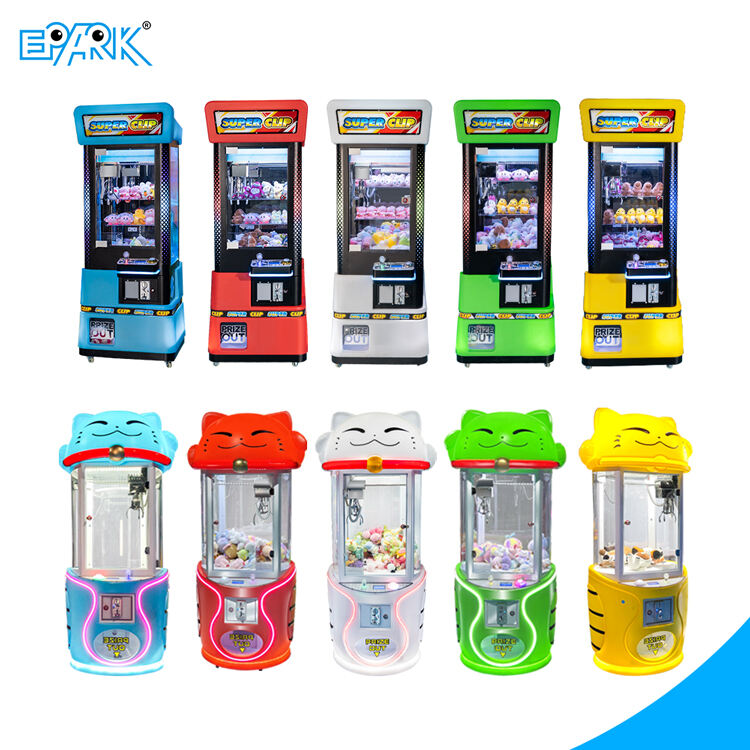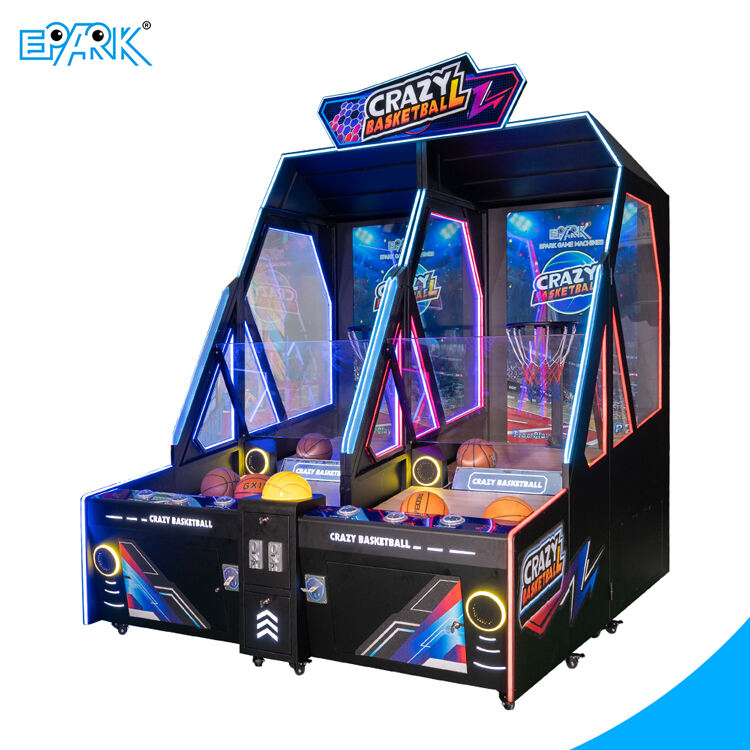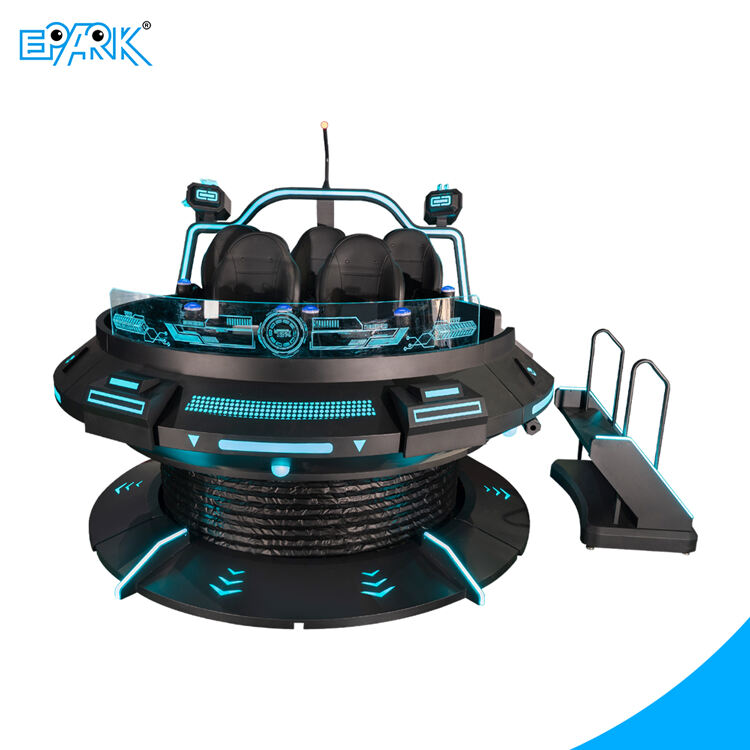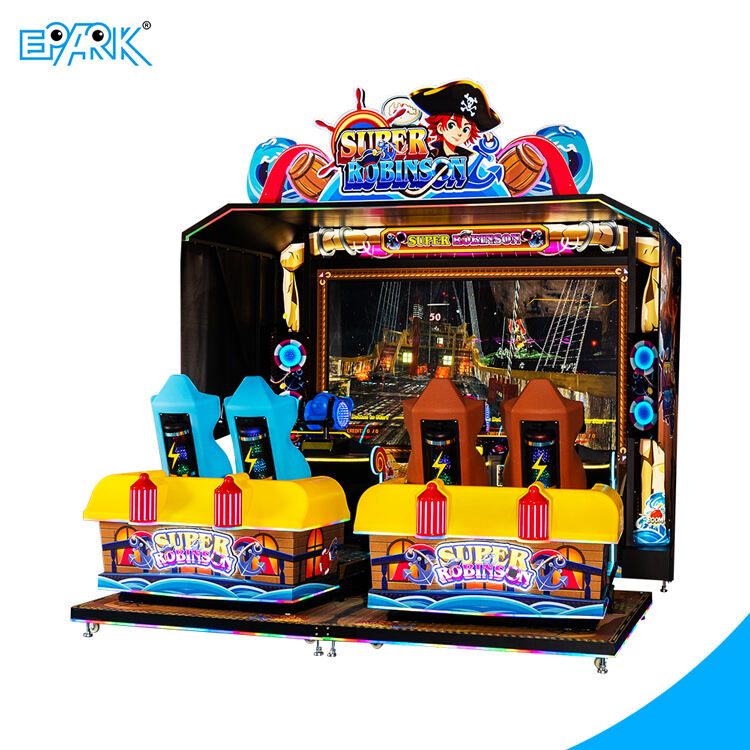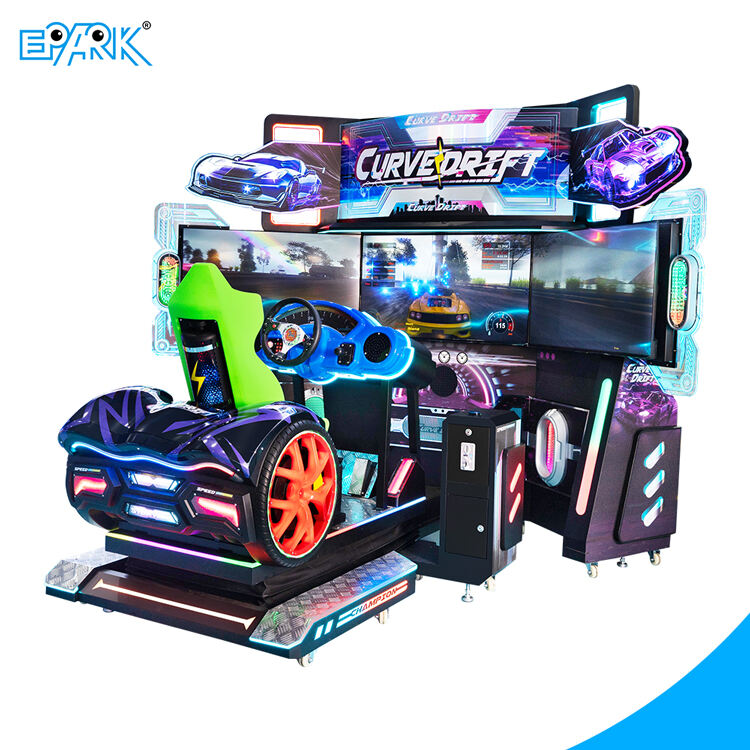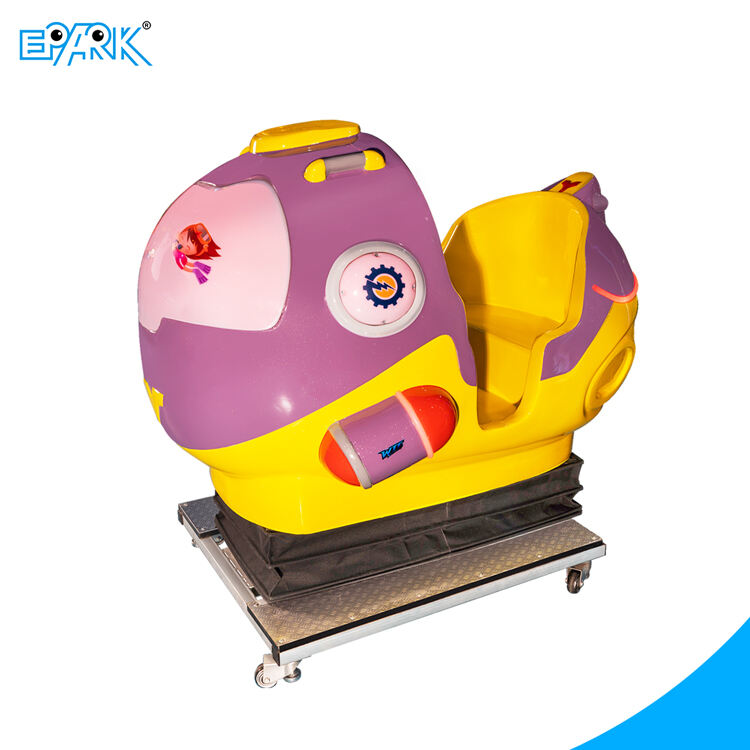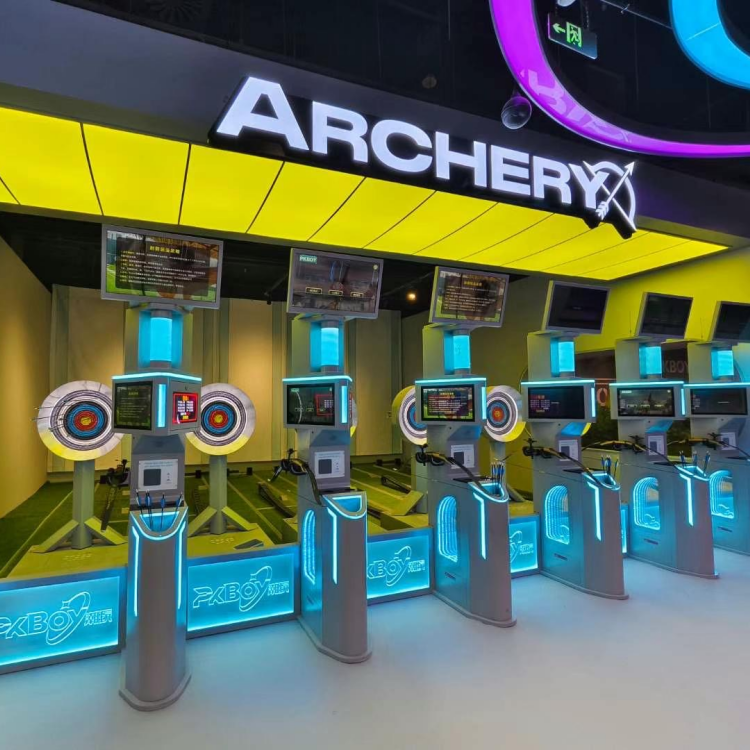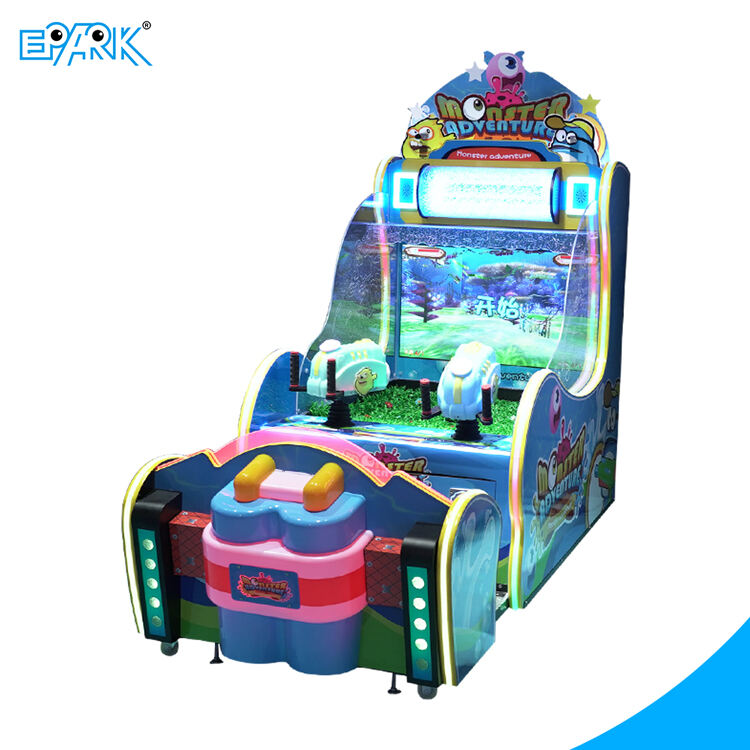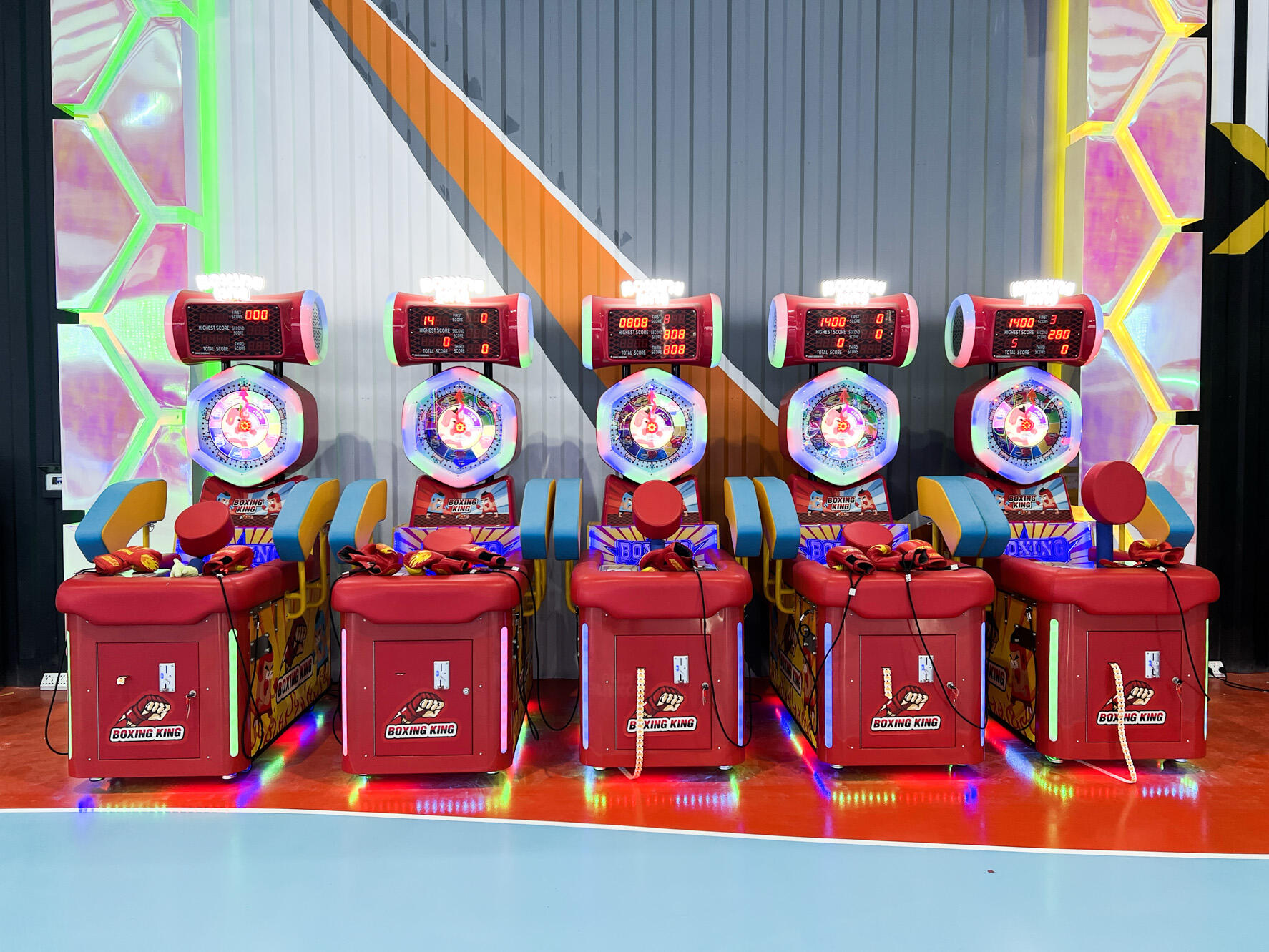From Daytona USA to Modern Simulators
Establishing a new standard in racing play, Daytona USA was hands down the most visually-striking and advanced arcade transportation experience to date when it was introduced in 1993, and its legacy concepturted much of the games that followed suit. Daytona USA was a stellar sight in arcades all around the world with its near true to life appearance and intuitive force feedback steering. That was to be the birth of the forever developing genre of arcade racing, ending with today's climate of hyper-realistic simulators. Advancements in technology have radically improved both the graphics and mechanics behind these machines over the years that have made the gaming experience truly exciting for the players. Games like Initial D and Mario Kart Arcade GP have been instrumental to the development of the genre, bringing in new ideas and deeper layers of gameplay. Racing games are on an upward trend in arcade machine sales showing a positive trend for arcade goers to this arcade racing action!
How Force Feedback Changed Virtual Racing
The adoption of force feedback technology in racing arcade machines has proved a momentous change in the industry. This is due to the innovation of providing real-time feedback that made players now experience presses, bumps, and turns as they would while driving a car. Experts say that the aspect of force feedback solved one crucial constraint of virtual racing termed as lack of immersion. This is because people could not feel what a racing car driver goes through while in the race tracks. The technology turned around the gaming industry in arcade setups mostly in popular games like Gran Turismo, where players no longer see the difference between a game and arcade racing. They are busy trying to qualify to feel the machine. The result was making rearing arcade setups their gaming spaces as it made racing intense and more fun.
LSI Integration: Arcade Machines in Gaming History
Latent Semantic Indexing (LSI) is a great way to map the gaming space and link otherwise distinct arcade game genres as different nodes in the larger arcade machine arc. LSI facilitates to establish the relations between games such as a racing game, an air hockey game and a dancing game, and to increase searchability thereof and to increase their relevance to the digital era. Arcade cabinets are a symbol of gaming culture at its finest, packing everything that made the golden age of gaming a truly Most of them are simply bad games. From the early meteoric rise of racing games such as Daytona USA to other big draws such as boxing arcade games, these machines have always been a source of wonder to fans and collectors, and are significant pieces of gaming history to say the least.
Sega Ferrari F355 Challenge: The Gold Standard
This Sega masterpiece is a landmark in arcade racing games because of its innovative game play and realism. Launched in the late nineties it was a game changer when in introduced state of the art immersion and realism via a cabinet that resembled the inside of a top of the range sports car. The game had advanced graphics and immediate gameplay which were ahead of its time and a sort of simulator-like experience. Comments from arcade collectors and industry figures note that it was popular around the world and played a role in the history of arcade gaming. The Ferrari F355 Challenge is still one of the most important games when it comes to the how cabinet design and technology can transform how players interact with racing games at arcades.
Cruis'n Blast and Multiplayer Mayhem
Cruis'n Blast revitalized the classic arcade racing series for a new generation of fans, with the emphasis on over-the-top track design, oversized non-street legal vehicles, boost-filled racing, and high-impact weapons gameplay. One of the main drawing points of the game is the ability to play against other players, ensuring that competitive (and anti-social) nature that's stapled to arcades is retained. The game's integration between lightning-fast speed and visceral, devastating visuals made it a mandatory play for squads of friends in the local arcade. Players and critics often cite Cruis’n Blast for its fun and immersive social play, as it was the game that broke new ground by bringing multiplayer gameplay to the world of arcade racing. Its fame is reverberated by way of community response and makes it a classic for casual players and arcade goers.
Fast & Furious: SuperCars – Bridging Films and Arcades
Fast & Furious: SuperCars arcade takes the adrenaline-fueled thrills and international attractions from the Fast & Furious series and build the ultimate ride for fans and gamers to recreate the speed and excitement from the films. Leveraging the success and popularity of the Fast & Furious film series and featuring characters on the arcade scene that made its debut in The Fast & Furious: Super Cars and The Fast & The Furious DRIFT, FAST & FURIOUS SUPERCARS adds new features, better graphics and more"action"! With amazing stats and top player engagement numbers, the title has successfully bottled the magic of the movies and created something unique and interactive. Therefore, F&F: SuperCars has become a very particular phenomenon in the game industry, where the film scene appears popular with a wide range of arcade goers.
Triple-Screen Immersion and 4K Displays
In the past few years, racing arcades have been revolutionized by the latest in screen technology. Drive triple-displays immerse you in the race and replicating the drivers view better than ever before; other features include a reinforced steel central column and Racing Wheels can be mounted, and the wheel-plate is Angle adjustable. This switch has been a big improvement in terms of visual realism for these games and aiding in terms of making the games more realistic in how they look. furthermore, everyone’s favourite arcade racing game takes it up a gear with definition 4 complete 4K resolution, delivering every bead of sweat and bead of oil served at 60fps. Including the hottest song in the car, and the hottest track on the fusion stage; with more direct music. The tech reviews and player reactions often show that the enhancements themselves are extremely immersive, and with the boost to visual quality and streaming the transitions are seamless. Not only do these additions immerse players into the game, They also establish a new standard for realism for arcade cabinets.
Pedal Systems and Realistic Gear Shifters
The development of force feedback control in arcade racing games has led teel to an overall additional measure of realism in gaming technology. Today's racing arcades will feature elaborate pedal mechanisms and accurate gear shifters making the gameplay more exiting by closely reassembling driving. Players are now able to feel the texture of these elements and as a result feel more connected to the virtual cars they are racing which positively adds to overall gameplay satisfaction. User quotes Users almost invariably talk about excitement and realism afforded by great controls (especially if these are based on real-life game physics.) Experts also agree that the good controls make arcade races more exciting and more entertaining. While it’s all about enhancing the player experience by providing more intuitive and responsive control systems, manufacturers continue to blur the lines between real and virtual in the driving and sim racing sector. This fusion of technology with design is the next logical step in the progression of arcade gaming.
Balancing Competition with Air Hockey and Dance Games
Racing arcades do the best when offered as part of a mix, including popular arcade games such as air hockey and dance machines, resulting in a vibrant and diverse amusement area. With all this variety of arcade games, spaces are able to draw diverse crowds and offer various activities, “something for everyone.” The fusion of competitive racing arcade games and other competitive or equally great arcade games are great for rounding out the arcade experience and added a splash of color and some huge potential for both high score bragging rights and amassed crowds and a line full of people wanting to race each other. Industry trends prove that the value of diverse and multi-player gaming experiences is the targeted crowd of different ages and caliber engaging in the play all at the same time as it blends the art of collaborating and competing.
The Social Appeal of Arcade Machine Clusters
Another cultural, or social, element that makes arcade racing attractive is found in the layouts of machines. The clustering of machines in a given space serves as an important incentive for players on multiple levels. Firstly, the playful form competition – players facing each other and casually looking over their respective scores – in itself attracts people looking for entertainment. Furthermore, these groupings also offer more possible space for both synchronous and asynchronous competition: either a large group is contributing to the game, trying to beat each other’s high scores, or players actively play together or against one another. These factors, more often than not, actually lead to the growth of communities, fan-bases, and return customers. Research indicates that the sociability of a given space positively correlates with satisfaction with services or products : by playing together, people are much more likely to return. Racing games benefit heavily from this dynamic, as their high-flying perception often leads to more group experiences. This fact strengthens the idea that gaming can also be a very social experience.
Retro vs. Modern: Which Suits Your Space?
When choosing classic or new race arcade machines, think about what makes each one unique like its design, technology and style of play. Retro machines gin up wistful feelings with time-honored graphics and simple game play that can be perfect for rooms that seek to recapture an old-school feel.null In contrast, today's machines have slick graphics, lifelike simulations, and screaming displays -- they appeal to a different kind of user. Deciding Factors:
Space Requirements: Retro machines generally have a smaller footprint, whereas modern setups might require more space due to additional features.
Audience Preferences: Retro can attract older audiences relishing nostalgia, while modern setups allure younger, tech-oriented players.
Purpose: If the priority is creating a thematic environment, retro might be the way. However, if the goal is to impress with the latest tech, modern is best.
Successful installations often blend the two, providing a diverse gaming experience catering to various preferences and spatial constraints.
Maximizing Revenue with Multiplayer Setups
Multiplayer racing arcades can drive revenues up by getting players more involved and much more likely to come back. Players make friends and form rivals, making one type of experience a community that is likely to come back. Arcade Operators should thus make certain popular multiplayer games are available and make sure to rotate them often enough to keep a player's attention. Revenue Optimization Techniques:
Promotion of Group Events: Offer discounts or incentives to groups participating in multiplayer races, which can increase footfall.
Leaderboards and Competitions: Organize regular competitions with prizes, encouraging repeat visits as players strive to improve their rankings.
Strategic Placements and Upgrades: Ensure machines are in high-traffic areas and consider periodic upgrades to sustain interest.
Evidence shows multiplayer setups tend to attract 30% more players, translating to increased consumer spending and higher profit margins (source: industry report on arcade profitability). Focusing on such setups could be a strategic move for arcade owners aiming to enhance gaming profitability.
Table of Contents
- From Daytona USA to Modern Simulators
- How Force Feedback Changed Virtual Racing
- LSI Integration: Arcade Machines in Gaming History
- Sega Ferrari F355 Challenge: The Gold Standard
- Cruis'n Blast and Multiplayer Mayhem
- Fast & Furious: SuperCars – Bridging Films and Arcades
- Triple-Screen Immersion and 4K Displays
- Pedal Systems and Realistic Gear Shifters
- Balancing Competition with Air Hockey and Dance Games
- The Social Appeal of Arcade Machine Clusters
- Retro vs. Modern: Which Suits Your Space?
- Maximizing Revenue with Multiplayer Setups

